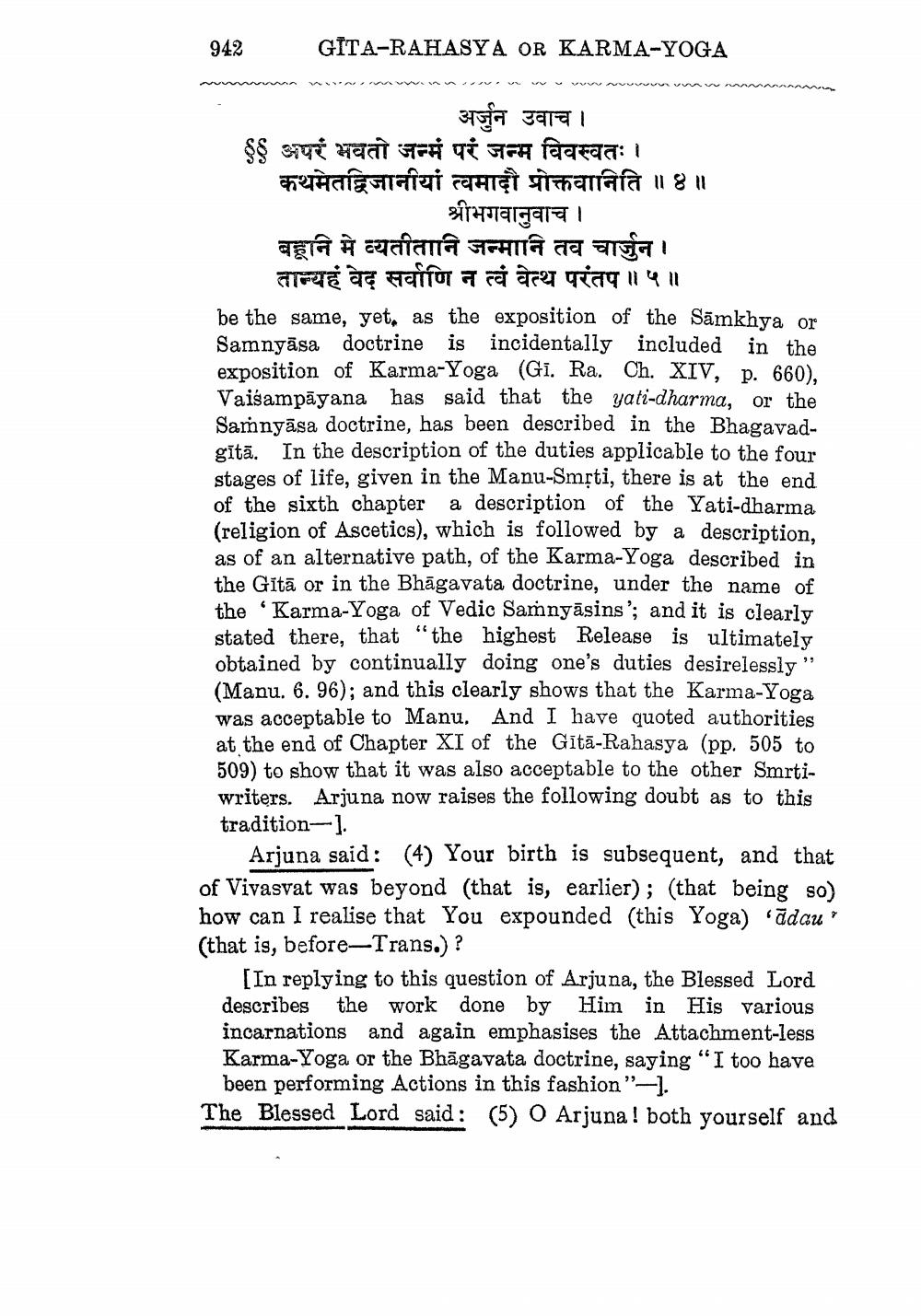________________
942
GITA-RAHASYA OR KARMA-YOGA
अर्जुन उवाच । $ अपरं भवतो जन्म परं जन्म विवस्वतः । कथमेतद्विजानीयां त्वमादौ प्रोक्तवानिति ॥४॥
श्रीभगवानुवाच । बहूनि मे व्यतीतानि जन्मानि तव चार्जुन ।
तान्यहं वेद सर्वाणि न त्वं वेत्थ परंतप ॥५॥ be the same, yet, as the exposition of the Sāmkhya or Samnyāsa doctrine is incidentally included in the exposition of Karma-Yoga (Gi. Ra. Oh. XIV, p. 660). Vaisampāyana has said that the yati-dharma, or the Samnyāsa doctrine, has been described in the Bhagavadgītā. In the description of the duties applicable to the four stages of life, given in the Manu-Smộti, there is at the end of the sixth chapter a description of the Yati-dharma (religion of Ascetics), which is followed by a description, as of an alternative path, of the Karma-Yoga described in the Gītā or in the Bhāgavata doctrine, under the name of the Karma-Yoga of Vedic Samnyāsins '; and it is clearly stated there, that "the highest Release is ultimately obtained by continually doing one's duties desirelessly" (Manu. 6. 96); and this clearly shows that the Karma-Yoga was acceptable to Manu. And I have quoted authorities at the end of Chapter XI of the Gītā-Rahasya (pp. 505 to 509) to show that it was also acceptable to the other Smrtiwriters. Arjuna now raises the following doubt as to this tradition--].
Arjuna said: (4) Your birth is subsequent, and that of Vivasvat was beyond (that is, earlier); (that being so) how can I realise that You expounded (this Yoga) adau (that is, before-Trans.) ?
[In replying to this question of Arjuna, the Blessed Lord describes the work done by Him in His various incarnations and again emphasises the Attachment-less Karma-Yoga or the Bhāgavata doctrine, saying "I too have been performing Actions in this fashion"-1. The Blessed Lord said: (5) O Arjuna! both yourself and




